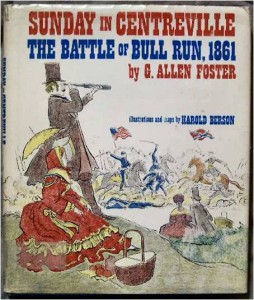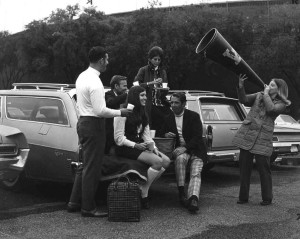The History of Tailgating
Tailgating has become such an integral part of American sports that it’s hard to imagine a time without hours of grilling, drinking and socializing before a game. Nowadays, tailgating is prevalent in nearly every major sporting event, but it wasn’t always a foregone conclusion that fans would meet and party before every match, game or contest. Tailgating has come a long way from its inception: pioneers of the act led the way to portable grills, booming stereos, cold beer and casual games. So let’s look at how tailgating came about and how it has become so popular.
First Instance
 Believe it or not, tailgating didn’t have anything to do with sports in the very beginning. In fact, the first-known instance of tailgating occurred during a much more serious event in American history than any football or baseball game. In 1861, the Battle of Bull Run marked an historical event in both the Civil War and the act of tailgating. Onlookers enjoyed picnic-style meals while cheering on soldiers during the battle. This marked the inaugural tailgate party, however strange it may seem.
Believe it or not, tailgating didn’t have anything to do with sports in the very beginning. In fact, the first-known instance of tailgating occurred during a much more serious event in American history than any football or baseball game. In 1861, the Battle of Bull Run marked an historical event in both the Civil War and the act of tailgating. Onlookers enjoyed picnic-style meals while cheering on soldiers during the battle. This marked the inaugural tailgate party, however strange it may seem.
The Chuck Wagon
Before tailgating could become popular enough to cause countless fans to need an intervention for alcoholics, the idea to eat meat on the go was born. We can thank Charles Goodnight for the fact that we can smell hamburgers and hotdogs being grilled as we walk through the parking lot outside of any major stadium before a game. As a Texas rancher after the Civil War, Goodnight had a brilliant idea in 1866. He took an army Studebaker wagon and transformed it into a cooking station on wheels. Called the chuck wagon after cheap cuts of beef, Goodnight’s invention changed the way ranching was done at the time, as well as how society would enjoy the experience of going to a sporting event. The design of the chuck wagon was basically an early form of a current tailgating setup. It was both practical and efficient, making it popular among ranchers and, eventually, tailgaters.
Tailgating and Sports
Even though tailgating was experienced during the Civil War and the chuck wagon was invented just a few years after, tailgating wasn’t married to sports until 1869. This major event was the first-ever intercollegiate football game between Rutgers and Princeton. Spectators showed up before the game to enjoy food and each other’s company. Although the game was much more like rugby than modern-day football, the contest would mark the first time tailgating was paired with football.
During the game, several spectators from Rutgers wore scarlet-colored scarves in order to show their allegiance to their team. This idea of being a fan mixed with a sporting event and tailgating was a precursor to how tailgating is done today, with team-themed tents, games and grilling equipment. The game between Rutgers and Princeton would end in the final score of 6 to 4 in favor of Rutgers (football was much different back then), but it would be a huge victory for football and tailgating. So now when you break out the grill and cornhole, remember how far tailgating has come, from the Battle of Bull Run to the chuck wagon to the Rutgers-Princeton game.
Scott Huntington is a sports writer specializing in all things related to history. Follow Scott at @SMHuntington



you’re in reality a just right webmaster. The siote loading
velocity is amazing. It kind of feels that you are doing anny unique
trick. Also, The contents are masterpiece. you’ve done a great job on this topic!
Sports are having the great contribution in everyone life and that would empower people to boost their health and make themselves physically strong as well. Very well to know about the history of tailgating that is really informative and cool sports too. Keep it up with your great sharing http://www.rushmypapers.org/ link and updating us about history.
certainly like your web site however you need to check the spelling on quite a few of your posts. Several of them are rife with spelling problems and I find it very troublesome to tell the truth nevertheless I will certainly come again again.
scammer